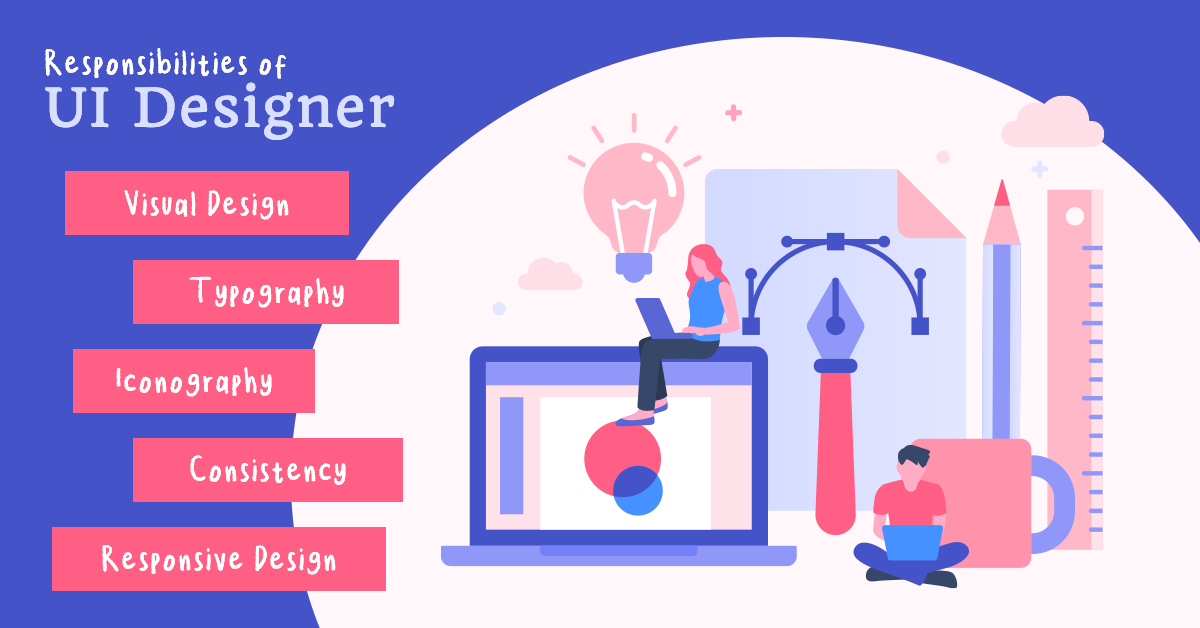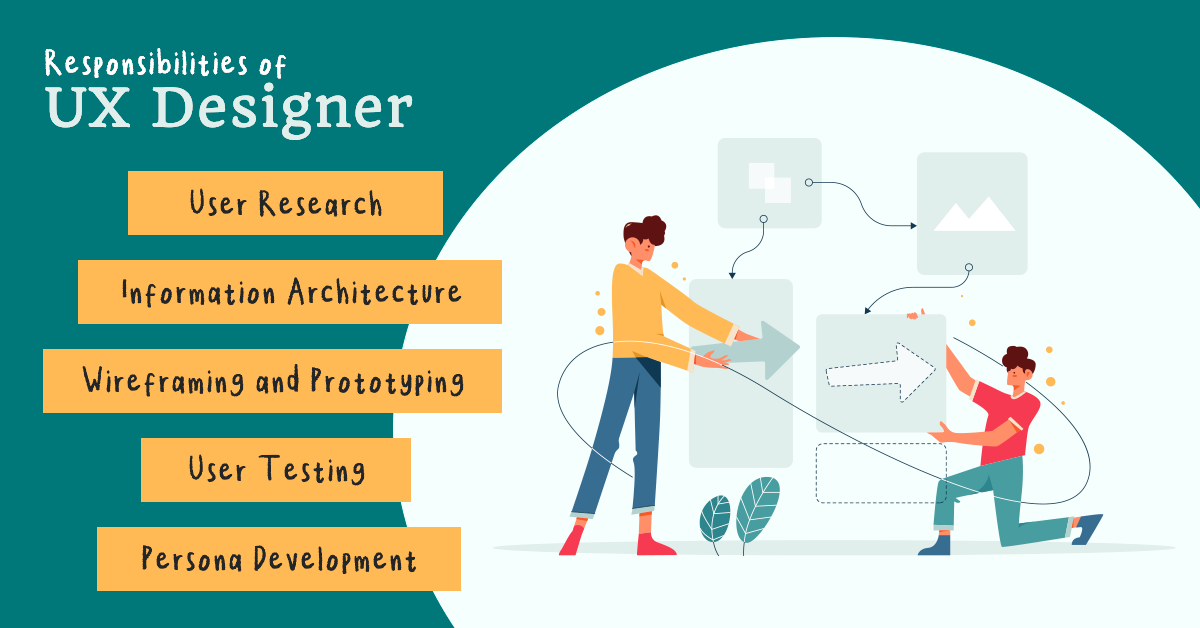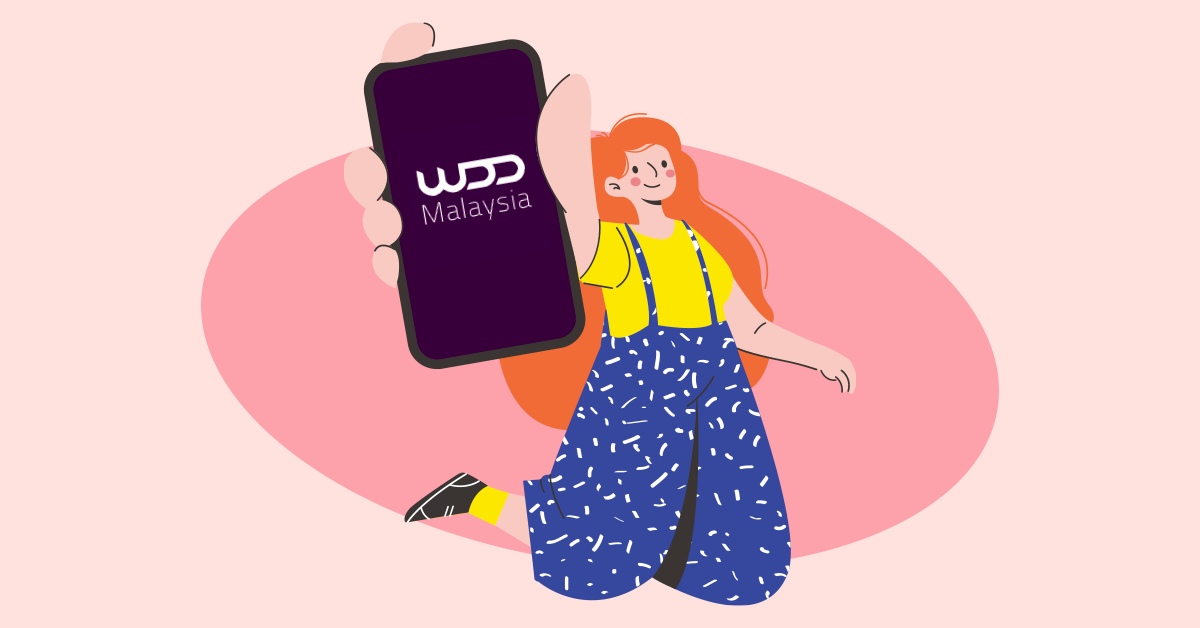
In the sphere of web design, the distinction between UI designers (User Interface) and UX designers (User Experience) holds the key to unlocking unparalleled success in crafting engaging UI UX strategies and user-friendly products. While the terms are often used interchangeably, understanding the nuanced roles of UI and UX designers is imperative for businesses aspiring to create a digital presence that goes beyond aesthetics.
UI designers are the visual architects, shaping the look and feel of a product, while UX designers delve into the intricacies of user behavior to create seamless and intuitive experiences. Together, they form a dynamic duo, each bringing a unique set of skills to the design table.
UI designers focus on the aesthetics, ensuring that the interface is visually appealing, consistent, and aligned with the brand identity. On the other hand, UX designers delve into the psychology of user interaction, meticulously crafting the user journey to be intuitive, enjoyable, and responsive to user needs. The synergy between UI and UX designers is the linchpin of a successful design process, where aesthetics and functionality converge to create a digital masterpiece.
As we embark on a journey to unravel the differences between UI and UX designers, we delve into the intricacies of their respective roles, responsibilities, and the impact they collectively bring to the user experience. Let us navigate this fascinating landscape where pixels meet emotions, and design is not just a visual endeavor but an immersive journey for users.
1. Quick Definition on UI Design
User Interface design focuses on the visual aspects of a product or application, ensuring that it is aesthetically pleasing, visually consistent, and user-friendly. UI designers are primarily concerned with the look and feel of a digital product, encompassing elements such as colour schemes, typography, icons, buttons, and other visual components. Their goal is to create a visually appealing and intuitive interface that aligns with the brand identity while facilitating seamless user interactions.

Responsibilities of UI Designers
Visual Design
UI designers are the visual architects of a digital product, responsible for creating a visually appealing and cohesive interface. This encompasses the selection and implementation of colour schemes, imagery, and overall aesthetics. The visual design is critical as it directly influences the user’s perception of the product. Colours evoke emotions, and a well-thought-out palette can enhance the user’s experience by creating a pleasant and engaging atmosphere.
The impact of strong visual design is significant. A visually appealing interface not only captures the user’s attention but also communicates the brand’s identity. Consistent visual elements across the product contribute to brand recognition and recall. Icons, buttons, and other graphical elements should be designed with user intuition in mind, ensuring that users can easily understand and interact with the interface.
The importance of experience in visual design lies in the ability to create a seamless and enjoyable journey for the user. An aesthetically pleasing design, combined with thoughtful visual elements, can enhance the overall satisfaction of users, making them more likely to engage with the product and return for future interactions.
Typography
Typography is a crucial aspect of UI design, influencing the readability and overall tone of the product. UI designers carefully select fonts that align with the brand’s personality and enhance the user’s understanding of the content. The choice of typeface, font size, and spacing all contribute to the legibility and visual hierarchy of the interface.
The impact of typography on user experience is profound. Clear and readable text improves comprehension, making it easier for users to consume information and navigate through the product. Consistent typography also adds to the overall visual harmony of the design, reinforcing brand identity and establishing a sense of professionalism.
Experience in typography involves a deep understanding of how different fonts convey emotions and how they interact with other design elements. An experienced UI designer can skillfully balance aesthetics with readability, ensuring that the chosen typography complements the overall visual design and contributes to a positive user experience.
Iconography
Icons are visual cues that communicate information quickly and effectively. UI designers are responsible for designing icons that are not only aesthetically pleasing but also universally understood. These visual elements serve as shortcuts, guiding users through the interface and enhancing the overall usability of the product.
The impact of well-designed iconography is evident in improved navigation and user understanding. Intuitive icons reduce cognitive load, allowing users to quickly grasp the functions or actions associated with each symbol. Consistency in icon design across the interface contributes to a cohesive visual language, fostering a sense of familiarity for users.
Experience in creating effective iconography involves understanding the context in which icons will be used and ensuring they align with the overall design language. Experienced UI designers know how to strike the right balance between creativity and usability, creating icons that are both visually appealing and functionally effective.
Consistency
Consistency is a fundamental principle in UI design, and UI designers are tasked with ensuring visual uniformity across different screens and elements of the interface. Consistent design elements contribute to a seamless user experience, reducing confusion and enhancing usability.
The impact of consistency is profound in building user trust and confidence. When users encounter a consistent visual language throughout the product, they develop a sense of predictability, knowing what to expect in terms of design and functionality. This predictability translates to a more comfortable and enjoyable user experience.
Experience in maintaining consistency involves a keen attention to detail and a thorough understanding of design principles. Experienced UI designers have the ability to create and adhere to design systems that establish rules for visual elements, ensuring a cohesive and harmonious user interface.
Responsive Design
With the proliferation of various devices and screen sizes, UI designers must ensure that the interface is responsive and adaptable. Responsive design involves creating layouts and visual elements that can gracefully adjust to different screen sizes, resolutions, and orientations.
The impact of responsive design is evident in providing a consistent and optimised experience across various devices. A responsive interface ensures that users can access and interact with the product seamlessly, regardless of whether they are using a desktop, tablet, or smartphone. This adaptability is crucial for reaching a broader audience and accommodating diverse user preferences.
Experience in responsive design requires a deep understanding of design principles and technical considerations. Experienced UI designers possess the expertise to create flexible layouts and visual elements that maintain usability and visual appeal across a range of devices, contributing to a positive and accessible user experience.
Key Takeaways
The responsibilities of UI designers encompass a multifaceted approach to visual design, typography, iconography, consistency, and responsive design. Each aspect plays a crucial role in shaping the user interface and, consequently, the overall user experience. The impact of these responsibilities is profound, influencing user perception, engagement, and satisfaction.
Experience in UI design is paramount, as it empowers designers to navigate the complexities of visual communication, strike the right balance between aesthetics and usability, and ultimately contribute to the creation of compelling and user-friendly digital products.
2. Quick Definition on UX Design
User Experience design focuses on the overall interaction and satisfaction users derive from a product. UX designers are concerned with understanding user behavior, needs, and motivations to create a seamless and enjoyable experience. Their role involves extensive research, wireframing, prototyping, and testing to refine and optimize the user journey through a digital product.

Responsibilities of UX Designers
User Research
User research is the cornerstone of UX design, and UX designers are tasked with understanding the needs, behaviors, and motivations of the target audience. This involves conducting in-depth research through methods such as user interviews, surveys, and observation to gather valuable insights. By empathizing with users, UX designers can uncover pain points and preferences that inform the design process.
The impact of thorough user research is profound. It allows designers to create solutions that genuinely address user needs, resulting in a product that is more likely to resonate with its intended audience. By understanding the user’s context and challenges, UX designers lay the foundation for a user experience that goes beyond aesthetics, focusing on functionality and usability.
Experience in user research is vital as it hones the designer’s ability to extract meaningful insights from diverse sources. Experienced UX designers possess the skills to ask the right questions, analyze data effectively, and translate research findings into actionable design decisions, ultimately contributing to the creation of user-centric products.
Information Architecture
Information architecture involves organizing and structuring content within a digital product to facilitate intuitive navigation and comprehension. UX designers are responsible for creating a clear and logical structure that helps users find information effortlessly. This often involves the development of site maps, navigation systems, and content hierarchies.
The impact of effective information architecture is evident in streamlined user journeys and reduced cognitive load. A well-organized structure ensures that users can easily locate the information or features they seek, enhancing the overall usability of the product. Clear information architecture contributes to a positive user experience by minimizing confusion and frustration.
Experience in information architecture requires a deep understanding of user behavior and content relationships. Experienced UX designers excel in creating information structures that align with user mental models, ensuring that the product’s organization feels intuitive and natural.
Wireframing and Prototyping
Wireframing and prototyping are essential UX design activities that involve creating low-fidelity representations of the product’s interface and functionality. UX designers use wireframes to outline the structure and layout, while prototypes simulate interactions and user flows. These tools serve as blueprints for the final product, allowing designers to test and refine concepts before development.
The impact of effective wireframing and prototyping is seen in reduced development costs and improved user satisfaction. By visualizing and testing early-stage designs, UX designers can identify and address potential issues before they become costly to fix. Prototypes also serve as valuable communication tools, enabling designers to convey their vision to stakeholders and development teams.
Experience in wireframing and prototyping involves mastery of design tools and a keen understanding of user interaction. Experienced UX designers can rapidly iterate through design concepts, refining and validating ideas efficiently to create a polished and user-friendly end product.
User Testing
User testing is a critical phase in the UX design process, where designers collect feedback from real users interacting with prototypes or the actual product. UX designers design scenarios and tasks to observe user behavior, preferences, and pain points. The insights gained from user testing inform further refinements, ensuring that the final product aligns closely with user expectations.
The impact of user testing is transformative, leading to iterative improvements that result in a product finely tuned to user needs. Identifying and addressing usability issues early in the design process can save time and resources, ultimately contributing to a product that resonates with its audience.
Experience in user testing requires the ability to design effective test scenarios, interpret user feedback, and implement iterative changes based on insights gained. Experienced UX designers integrate user testing seamlessly into the design process, leveraging it as a powerful tool for continuous improvement.
Persona Development
Personas are fictional representations of user archetypes, embodying characteristics, goals, and behaviors of the target audience. UX designers create personas to humanize the design process, ensuring that decisions are made with the end user in mind. Personas help designers empathize with users, making it easier to prioritize features and design elements that align with user needs.
The impact of persona development is seen in a more targeted and user-centric design approach. By understanding the diverse needs of different user groups, designers can create experiences that resonate with a broader audience. Personas also serve as a reference point throughout the design process, keeping the user at the center of decision-making.
Experience in persona development involves the ability to distill complex user data into clear and actionable personas. Experienced UX designers excel in creating personas that are not only representative but also guide the design process effectively, ensuring that the final product meets the needs of real users.
Key Takeaways
The responsibilities of UX designers encompass a holistic approach to user understanding, information architecture, prototyping, user testing, and persona development. Each responsibility plays a crucial role in shaping a user experience that is not only visually appealing but also functional, intuitive, and aligned with user needs.
The impact of these responsibilities is far-reaching, influencing the success and satisfaction of a digital product. Experience in UX design is paramount, as it equips designers with the skills to navigate the complexities of user-centric design, integrate feedback seamlessly, and ultimately contribute to the creation of products that delight and engage users.

3. Collaboration and Integration in UI UX Strategies into the Web Design
Collaboration and integration between UI and UX designers are crucial components in the creation of successful digital products. While UI designers focus on the visual aspects and aesthetics, and UX designers concentrate on the overall user experience, it is their synergy that results in a seamless, user-friendly, and visually compelling product.
Understanding the Synergy
Collaboration between UI and UX designers is not just a matter of working side by side; it’s about leveraging the strengths of each role to enhance the overall design process. UI designers bring a keen eye for aesthetics, visual consistency, and brand representation, while UX designers contribute expertise in user research, information architecture, and usability. The integration of these skill sets ensures that the final product not only looks good but also delivers a meaningful and satisfying user experience.
Open Communication
Effective collaboration starts with open communication. UI and UX designers must engage in continuous dialogue to share insights, updates, and challenges throughout the design process. Regular meetings, brainstorming sessions, and design critiques create an environment where ideas can flow freely, fostering creativity and innovation.
By maintaining transparent communication, both teams gain a deeper understanding of the project goals and user needs, ensuring that design decisions align with the overall vision.
Collaborative Ideation Sessions
Collaboration extends beyond communication to collaborative ideation sessions. Bringing UI and UX designers together for brainstorming and ideation allows them to pool their diverse perspectives and skills. UI designers can provide valuable input on visual elements and branding, while UX designers can offer insights into user behaviors and pain points. This collaborative exchange sparks creativity and results in well-rounded design solutions that seamlessly blend aesthetics with functionality.
Design Systems
One of the key tools for fostering collaboration and integration is the use of design systems. Design systems are comprehensive collections of reusable components, guidelines, and principles that ensure consistency across the entire product. UI designers contribute to design systems by creating visually appealing and on-brand components, while UX designers contribute by defining interactions and user flows. The use of a shared design system streamlines the design process, reduces redundancy, and maintains a cohesive user experience.
Prototyping and User Testing
The collaboration between UI and UX designers is most evident during the prototyping and user testing phases. UX designers create interactive prototypes that showcase the proposed user flows and interactions, while UI designers contribute by ensuring that the visual elements align with the brand and are aesthetically pleasing. User testing involves gathering feedback on both the usability and visual appeal of the product.
This iterative process allows designers to refine and improve the design based on real user insights, ensuring that the final product is not only visually stunning but also highly functional and user-friendly.
Balancing Aesthetics and Functionality
The collaboration between UI and UX designers is a delicate dance between aesthetics and functionality. UI designers ensure that the visual elements are engaging, on-brand, and visually consistent, while UX designers ensure that the user journey is smooth, intuitive, and aligned with user expectations. Striking the right balance requires mutual respect for each other’s expertise and a shared commitment to creating a product that excels in both form and function.
The Importance of Cross-Training
To enhance collaboration, there is value in fostering cross-training between UI and UX designers. While individuals specialize in one area, having a basic understanding of the other’s role can facilitate smoother collaboration. Cross-training promotes empathy, mutual understanding, and the ability to anticipate each other’s needs, ultimately leading to a more cohesive and integrated design process.
Key Takeways
In the world of UI/UX design, collaboration and integration between UI and UX designers are paramount. A harmonious partnership ensures that the final product not only meets aesthetic standards but also delivers a seamless and delightful user experience.
Open communication, collaborative ideation, the use of design systems, and a shared commitment to user testing contribute to a dynamic and integrated design process. The synergy between UI and UX designers is the catalyst for creating digital products that captivate users visually while providing a meaningful and intuitive journey. Ultimately, the success of a design relies on the ability of these two disciplines to collaborate effectively, leveraging their unique strengths to create something greater than the sum of its parts.

4. Final Thoughts
In the fast-paced digital landscape, where user expectations are ever-evolving, the collaboration between UI and UX designers emerges as a critical factor in the success of digital products. As we distill the essence of their roles, it becomes evident that the synergy between aesthetics and functionality is paramount for creating products that resonate with users.
Key Takeaways
Harmony of Aesthetics and Functionality
UI and UX designers, though distinct in their roles, must work in harmony to strike the right balance between aesthetics and functionality. A visually appealing interface is incomplete without a seamless and intuitive user experience.
User-Centric Approach
UX designers bring a user-centric perspective, emphasizing the importance of understanding user needs, behaviors, and preferences. UI designers, in turn, translate this understanding into visually appealing and coherent design elements.
Collaboration is Key
The collaboration between UI and UX designers is not just beneficial but essential. Open communication, shared ideation, and a mutual understanding of each other’s roles contribute to a more holistic and integrated design process.
Continuous Iteration and Improvement
The iterative nature of design, driven by user testing and feedback, is a shared responsibility. Both UI and UX designers contribute to refining and enhancing the product based on real user insights, ensuring continuous improvement.

5. Why Choose a Web Design Company like WDD Malaysia for Your Business
In the competitive digital landscape, where the user experience is a critical differentiator, partnering with a professional web design company like WDD Malaysia can elevate your business to new heights. Here are key reasons why such a collaboration can benefit your business:
Expertise and Experience
A reputable web design company brings a wealth of expertise and experience to the table. Their team comprises skilled UI and UX designers who understand the nuances of creating visually stunning interfaces coupled with seamless user experiences.
Comprehensive Solutions
Web design companies offer end-to-end solutions, from conceptualization to implementation. This includes user research, prototyping, visual design, and ongoing optimization, ensuring a comprehensive approach to your digital presence.
Cutting-Edge Technologies
Staying abreast of the latest technologies and design trends is crucial. Professional web design companies invest in cutting-edge tools and technologies, ensuring that your digital assets are not only visually appealing but also technologically advanced.
Scalability and Flexibility
As your business grows, so do your digital needs. A web design company provides scalable solutions, adapting to the evolving requirements of your business. This flexibility ensures that your digital presence remains dynamic and responsive to changing market demands.
Strategic Approach
Beyond aesthetics, a web design company takes a strategic approach to your digital presence. They align design decisions with your business goals, ensuring that every pixel serves a purpose in enhancing your brand image and driving user engagement.
In conclusion, the collaboration between UI and UX designers is a linchpin for creating successful digital products. The nuanced differences between these roles contribute to a holistic and user-centric design process. Partnering with a web design company like WDD Malaysia goes beyond meeting design needs; it is an investment in a strategic and comprehensive approach to your digital presence, ensuring that your business stands out in the competitive digital landscape.




